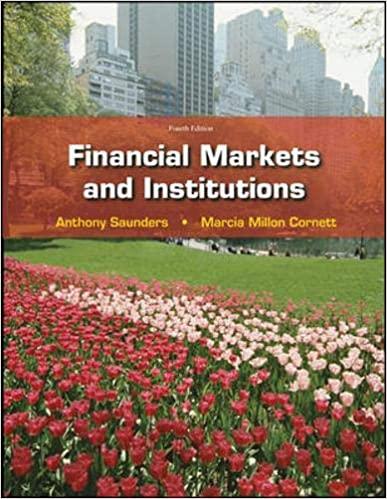Question
4. Bond valuation The process of bond valuation is based on the fundamental concept that the current price of a security can be determined by
4. Bond valuation
The process of bond valuation is based on the fundamental concept that the current price of a security can be determined by calculating the present value of the cash flows that the security will generate in the future.
There is a consistent and predictable relationship between a bonds coupon rate, its par value, a bondholders required return, and the bonds resulting intrinsic value. Trading at a discount, trading at a premium, and trading at par refer to particular relationships between a bonds intrinsic value and its par value. This also results from the relationship between a bonds coupon rate and a bondholders required rate of return.
Remember, a bonds coupon rate partially determines the interest-based return that a bond pay, and a bondholders required return reflects the return that a bondholder to receive from a given investment.
The mathematics of bond valuation imply a predictable relationship between the bonds coupon rate, the bondholders required return, the bonds par value, and its intrinsic value. These relationships can be summarized as follows:
| When the bonds coupon rate is equal to the bondholders required return, the bonds intrinsic value will equal its par value, and the bond will trade at par. | |
| When the bonds coupon rate is greater than the bondholders required return, the bonds intrinsic value will its par value, and the bond will trade at a premium. | |
| When the bonds coupon rate is less than the bondholders required return, the bonds intrinsic value will be less than its par value, and the bond will trade at . |
For example, assume Jackson wants to earn a return of 7.00% and is offered the opportunity to purchase a $1,000 par value bond that pays a 7.00% coupon rate (distributed semiannually) with three years remaining to maturity. The following formula can be used to compute the bonds intrinsic value:
| Intrinsic ValueIntrinsic Value | = = | A(1+C)1+A(1+C)2+A(1+C)3+A(1+C)4+A(1+C)5+A(1+C)6+B(1+C)6A1+C1+A1+C2+A1+C3+A1+C4+A1+C5+A1+C6+B1+C6 Complete the following table by identifying the appropriate corresponding variables used in the equation.
|
Step by Step Solution
There are 3 Steps involved in it
Step: 1

Get Instant Access to Expert-Tailored Solutions
See step-by-step solutions with expert insights and AI powered tools for academic success
Step: 2

Step: 3

Ace Your Homework with AI
Get the answers you need in no time with our AI-driven, step-by-step assistance
Get Started


